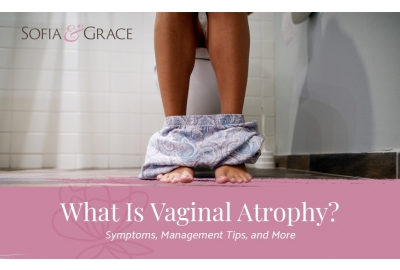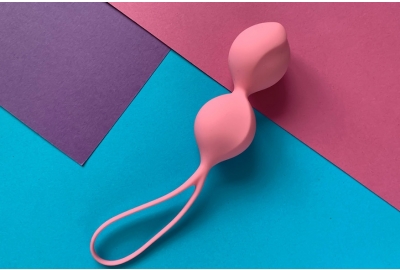11 Helpful Hysterectomy Recovery Tips for Safe Healing
A hysterectomy is a procedure that removes the uterus, or womb, from the body. The uterus is the organ that grows the baby when a woman is pregnant. Removing the uterus means that you will stop having menstrual periods and will be unable to become pregnant. Sometimes, the ovaries and fallopian tubes may also be removed during the surgery. If the ovaries are removed, then you will enter menopause no matter how young or old you are.
5 years ago
What Do Pelvic Floor Spasms Feel Like?
If your pelvic floor muscles become too stretched out, then that can result in a host of issues, including incontinence and less pleasurable sex. While many women are focused on tightening up their pelvic floors through pelvic floor exercises, having pelvic muscles that are too tight can also lead to other issues, namely pelvic spasms. If you’re wondering whether or not you have pelvic spasms, below, we explain what pelvic floor spasms feel like and then explain a couple of options for treating pelvic floor spasms.
5 years ago
Prolapse After Giving Birth: Everything You Need to Know
New mamas know that a lot of things happen to the body before, during, and after pregnancy. There’s the expected — weight gain, skin changes, hair loss. And then there’s the unexpected. Although it’s rarely discussed, pelvic organ prolapse is a shockingly common post-childbirth complication that many women don’t anticipate. In this guide, we’re going over everything you need to know about this condition so you can handle it with confidence.
5 years ago
How to Connect Your Pelvic Floor and Breathing
You know that your abdominal muscles are involved in breathing, but did you know that your pelvic floor is, too? Proper pelvic floor breathing ensures that your muscles are contracting and releasing at the appropriate times and that they aren’t being overworked. Here’s what you need to know about how to do pelvic floor breathing properly:
5 years ago
Diabetes and Incontinence: Understanding the Connection
As if dealing with your blood sugar wasn’t already enough on its own, having diabetes can also lead to incontinence. In this guide, we explain the various links between having diabetes and having incontinence and also walk through your options for managing your incontinence so you can live your life to the fullest.
5 years ago
Menopause and Yeast Infections: Everything You Need to Know
If you’re experiencing symptoms of menopause, you probably feel like you’re having more yeast infections than ever. Could there be a link between menopause and yeast infections? In this guide, we explain what yeast infections are and what causes them. Here’s what you need to know about menopause relief and yeast infections:
5 years ago
Can a UTI Cause Incontinence?
You think you have a UTI, and, on top of that, you think it might be causing incontinence as well. Discover what you need to know about UTIs and whether or not having one means that you might need to purchase incontinence products for women:
5 years ago
4 Pelvic Floor Release Stretches for Tight Muscles
When it comes to pelvic floor exercises, you’ve probably heard a lot about Kegels, Kegel balls, and other exercises and devices that are designed to tighten the pelvic floor. However, sometimes your pain and discomfort are caused by the opposite problem: your pelvic floor is too tight and needs to relax. In this case, contracting the muscles won’t help and might actually make things worse. So what should you do when you need pelvic floor release? Here are four stretches to try in place of Kegel ball exercises:
5 years ago
What Is Vaginal Atrophy? Symptoms, Management Tips, and More
As you age and menopause sets in, you might notice that your vagina becomes dry or itches, and that you start contracting more yeast infections and UTIs. Vaginal atrophy, sometimes more broadly referred to as genitourinary syndrome of menopause, is a relatively common side effect of menopause. In this guide, we explain what vaginal atrophy is, what its symptoms are, how it’s diagnosed and treated, and more.
5 years ago
What Is Pelvic Floor Dysfunction?
If you’re a woman, chances are you’ve heard the phrase “pelvic floor dysfunction” a time or two. That’s because changes in the pelvic floor are shockingly common among women. In fact, the experts say that about one in three women will experience a pelvic floor disorder in her lifetime. While the stats don’t make these conditions any less frustrating — or any less scary for first-time patients — they do mean we have a wealth of knowledge and treatment options available, from simple Kegel ball exercises to professional interventions. So don’t stress!
5 years ago









